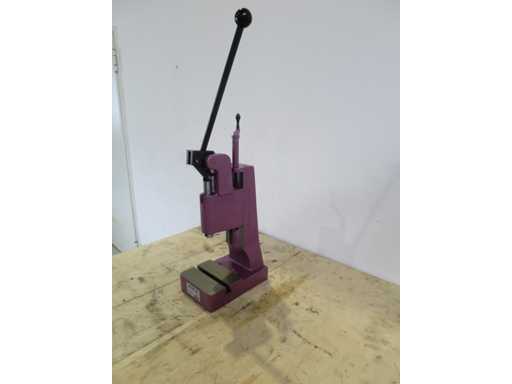Mechanical Presses
Standard presses for forming & embossing processes
Definition of a "mechanical press"
A mechanical press is a remodelling, stationary piece of equipment whose processes are mechanically operated through levers, knuckle-joint systems, eccentrics or spindle presses. Other press processes include pneumatic presses using compressed air, or hydraulic presses using pressure fluids.
They are used for embossing and for light to intermediate remodelling work
Mechanical presses, in relation to hydraulic presses, have restricted levels of pressure
They are composed of a frame, a lifting mechanism, a pressing tool and a power source.
Quality Great offers Personalized
Areas of operation
Mechanical presses, in relation to hydraulic presses, have restricted levels of pressure. They are used for embossing and for light to intermediate remodelling work. Pure mechanical presses, operated manually with levers, are only made to be used for light applications such as the filling of cartridges. Eccentrics, knuckle-joint systems or spindle presses are in part electronically operated and can be used for intermediate levels of pressure of up to 5000 kN.
The structure of a mechanical press:
Mechanical presses are composed of a frame, a lifting mechanism, a pressing tool and a power source. Besides the manually operated lever presses, mechanical presses are also in part electrically operated. On spindle presses, a flywheel is kept in motion, on which an eccentric connecting rod is moved through use of a clutch. The connecting rod, which is moving up and down, operates the tool that starts the pressing process. A knuckle-joint press pushes the workpiece together over a knuckle-joint, and a spindle press generates the desired pressure through an up and down movement of a rotating spindle. The most important and valuable component of a press is the actual pressing tool. This is a highly precise customised product, with which the actual workpieces can be remodelled. Through electrical support, mechanical presses can achieve high clock rates. This is especially true for the knuckle-joint press, which is commonly used for stamping small workpieces. In order to ensure efficiency for this process, automatic assembly is necessary.
Working with a mechanical press
Even though manually operated presses are widespread, today they are increasingly being replaced by automatically operated production-lines, and their importance is decreasing. However, they still regularly belong in the machine parks of production companies. The machines in highest demand today, are mechanical presses with high clock rates that allow for automatic inputs. Recommended providers of mechanical presses are: FRECH, MAWI, KRUPP, WEINGARTEN and SIEMPELKAMP







